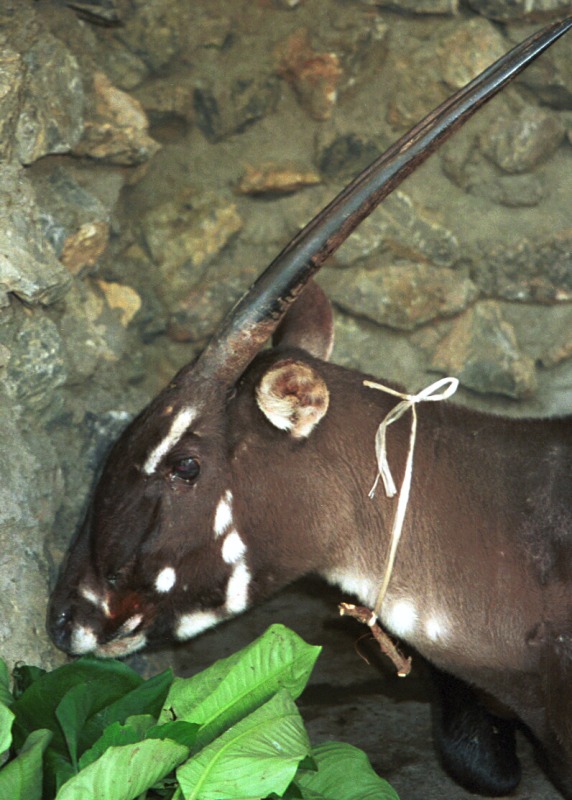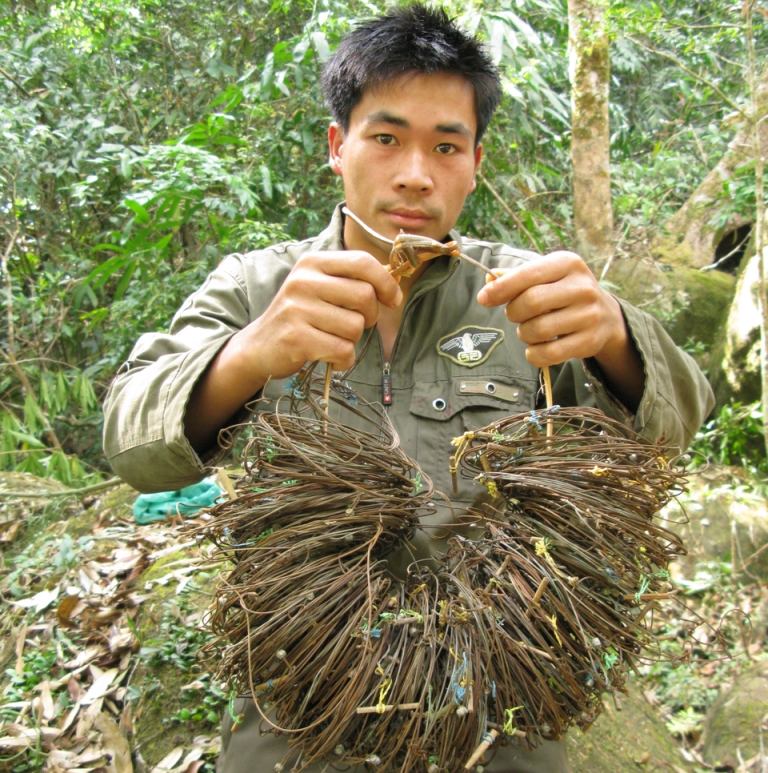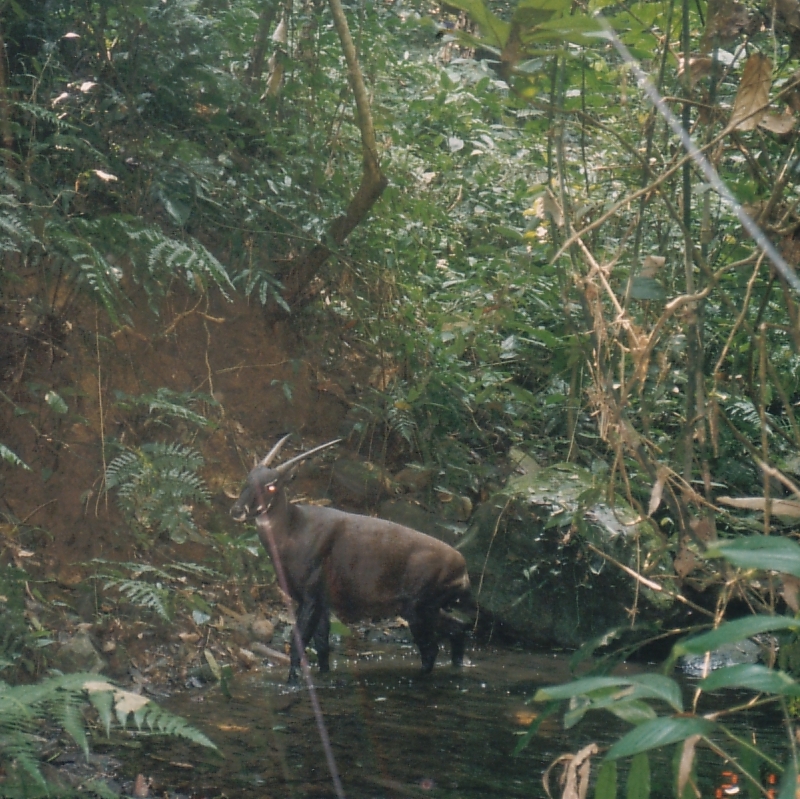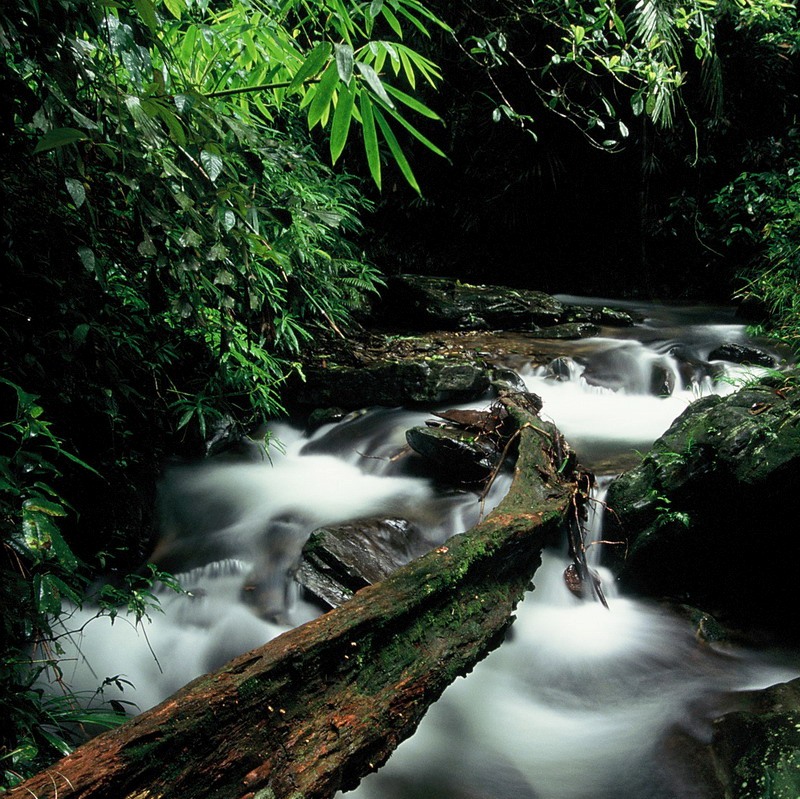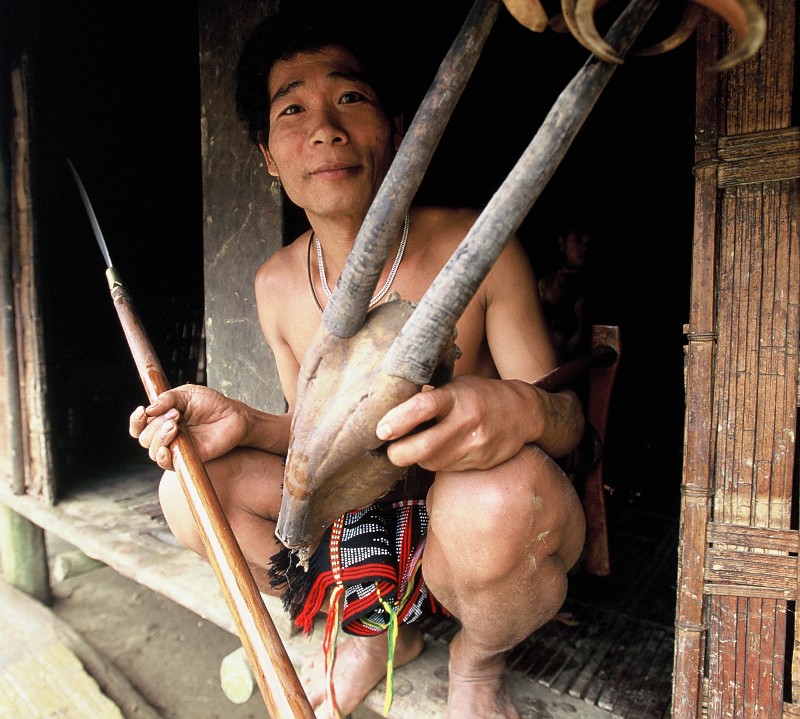Saola still a mystery 20 years after its spectacular debut
Two decades after the sensational discovery of a new ungulate species called the Saola (Pseudoryx nghetinhensis), this rare animal remains as mysterious and elusive as ever. The Saola Working Group (SWG) of the IUCN Species Survival Commission, WWF and the Wildlife Conservation Society (WCS) warn that the species is sliding towards extinction because of intensive hunting pressure and poor reserve management.
A cousin of cattle but resembling an antelope in appearance, the Saola was discovered in 1992 by a joint team from Vietnam’s Ministry of Forestry and WWF surveying the forests of Vu Quang, near Vietnam's border with Laos. The team found a skull with unusual long, straight horns in a hunter's home and knew it was something extraordinary. The find proved to be the first large mammal new to science in more than 50 years, and one of the most spectacular zoological discoveries of the 20th century.
The difficulty in detecting the animal has prevented scientists from making a precise population estimate. “If things are good, there may be a couple of hundred Saola out there,” says William Robichaud, Coordinator of the IUCN Saola Working Group. “If things are bad, the population could now be down in the tens.”
Twenty years later, little is still known about the Saola’s ecology or behaviour. In 2010, villagers in the central Laos province of Bolikhamxay captured a Saola, but the animal died several days later. Prior to that, the last confirmed record of a Saola in the wild was in 1999 from camera-trap photos in Bolikhamxay.
While development is encroaching on the Saola’s forest habitat, the greatest threat comes from illegal hunting. Saola are caught in wire snares set by hunters to catch other animals, such as Sambar Deer (Rusa unicolor), Muntjac Deer (Muntiacus reevesi) and civets, which are largely destined for the lucrative wildlife trade driven by traditional medicine demand in China and restaurant and food markets in Vietnam and Laos. Since the discovery of the Saola, Vietnam and Laos have established a network of protected areas in the animal’s core range and some reserves are pursuing innovative approaches to tackle rampant poaching. In the Saola Nature Reserve in Vietnam’s Thua Thien Hue Province, a new approach to forest guard co-management is delivering positive results. Since February 2011, the team of forest guards patrolling the reserve have removed more than 12,500 snares and close to 200 illegal hunting and logging camps.
“Saola are extremely secretive and very seldom seen,” says Nick Cox, Manager of WWF-Greater Mekong’s Species Programme. “While they inhabit a very restricted range, there is still no reported sighting of a Saola in the wild by a scientist, and the handful of Saola that have been taken into captivity have not survived.”
The Saola is an icon for biodiversity in the Annamite mountain range that runs along the border of Vietnam and Laos. This biodiversity hotspot boasts an incredible diversity of rare species, with many found nowhere else on the planet. In addition to the discovery of the Saola, two new species of deer, the Large-antlered Muntjac (Muntiacus vuquangensis) and the Truong Son Muntjac (Muntiacus truongsonensis), were uncovered in the Annamite’s rugged, evergreen forests in 1994 and 1997 respectively. Efforts to save the Saola have reached a greater level of urgency since another of Vietnam's iconic species, the Vietnamese Javan Rhino (Rhinoceros sondaicus annamiticus), was confirmed extinct in 2011 after the battle to save the last individual was lost to poachers.
“If hunting levels can be significantly reduced, we are optimistic about the species' prospects,” says Chris Hallam, WCS-Laos’ Conservation Planning Advisor. “This will require funds for more patrol boots on the ground in Saola areas, developing positive incentives for its conservation, and ultimately reducing consumer demand for wildlife meat and products. The Saola has made it to its twentieth anniversary, but it won’t have many more anniversaries unless urgent action is taken.”
Issues involving species survival and conservation will be discussed at the IUCN World Conservation Congress in Jeju, Republic of Korea, from 6 to 15 September 2012.
For more information or to schedule interviews please contact:
Maggie Roth, IUCN Media Relations, m +1 202 262 5313, e maggie.roth@iucn.org
